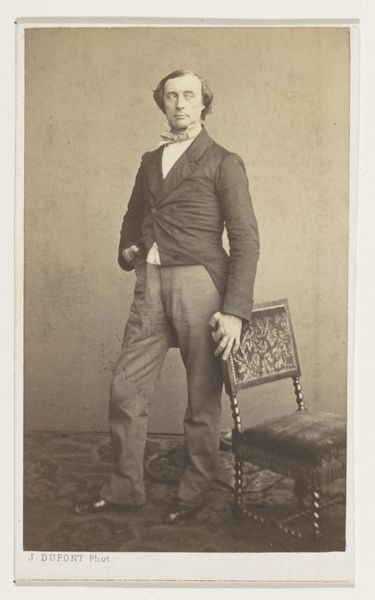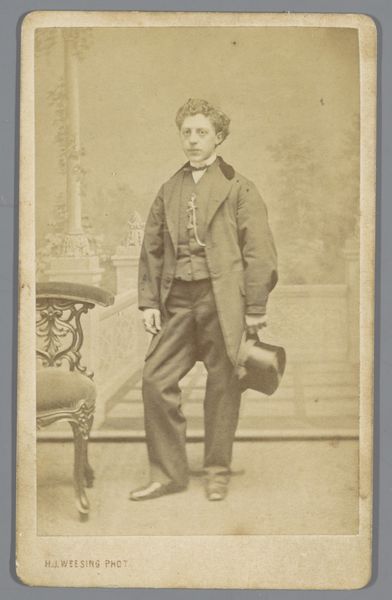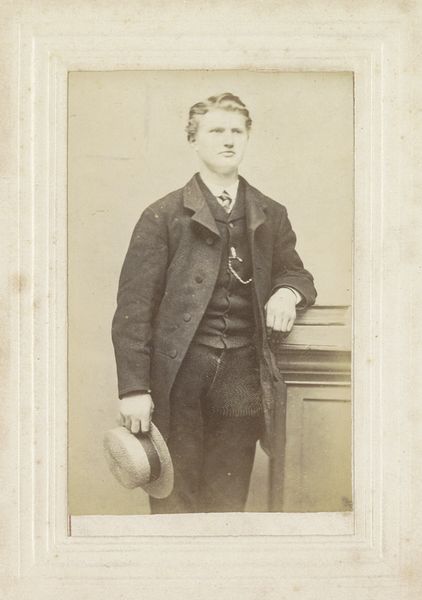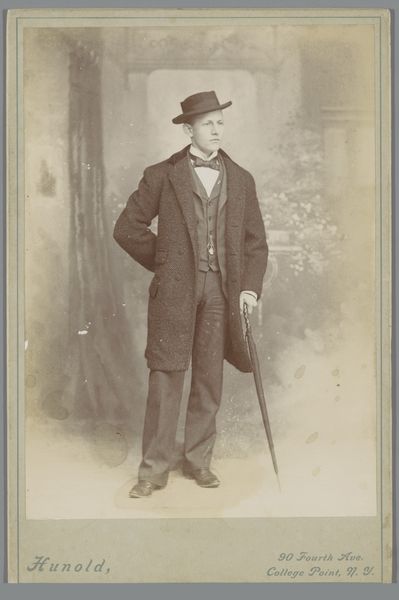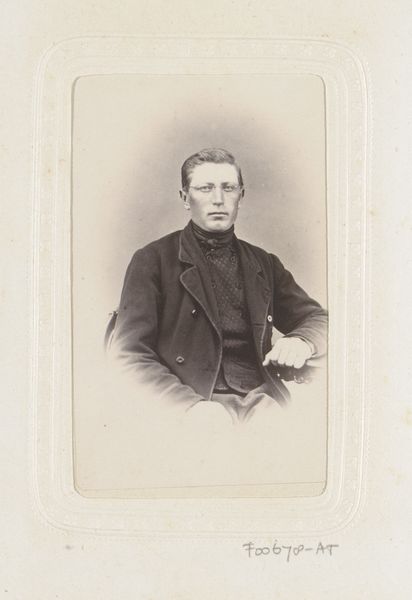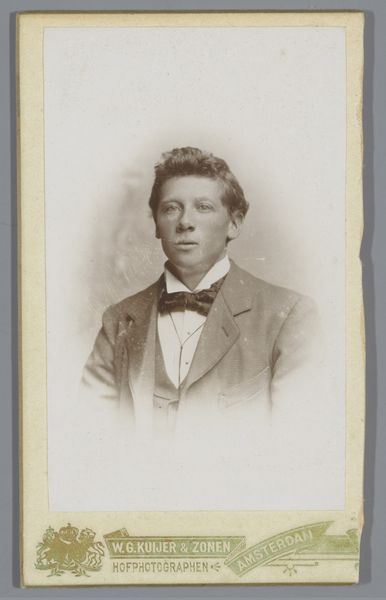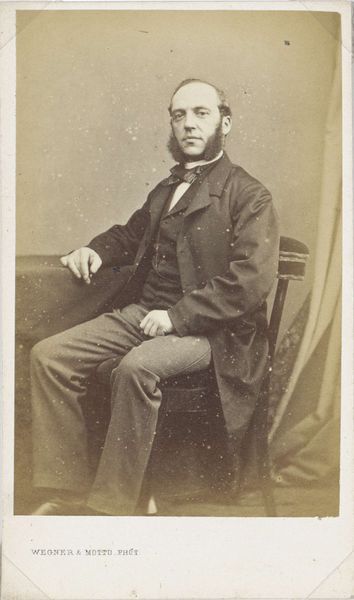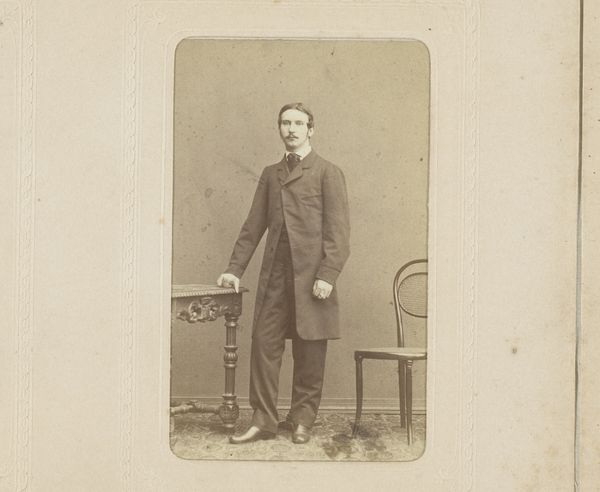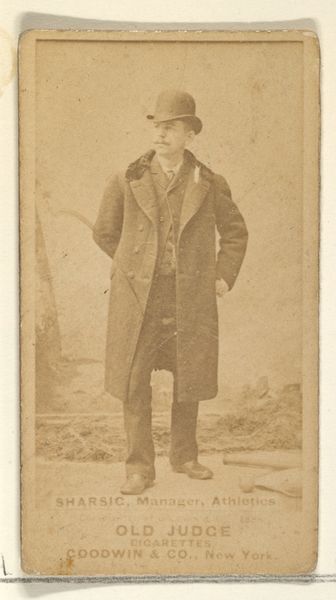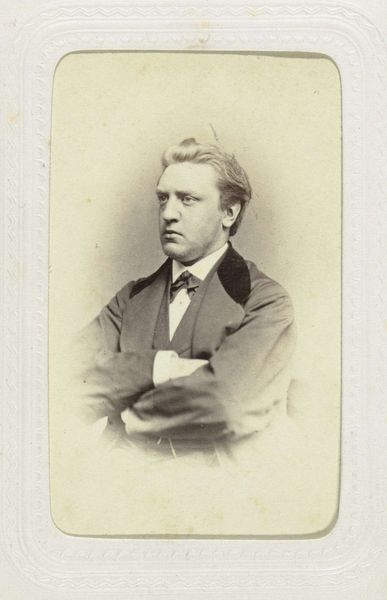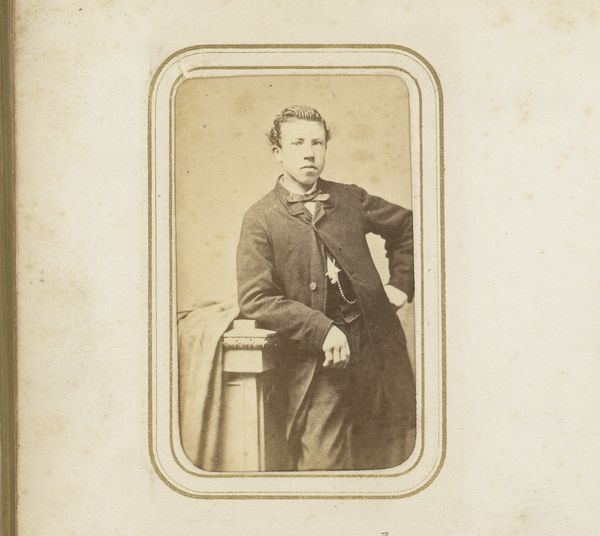
Portret van een man mogelijk een student, staand met beide handen in de zakken c. 1862 - 1866
0:00
0:00
johannespietervanwisselingh
Rijksmuseum
Dimensions: height 104 mm, width 60 mm
Copyright: Rijks Museum: Open Domain
Editor: So, here we have "Portret van een man mogelijk een student, staand met beide handen in de zakken" – Portrait of a man, possibly a student, standing with both hands in his pockets. It’s by Johannes Pieter van Wisselingh, sometime between 1862 and 1866. It’s a gelatin silver print, and I'm struck by the contrast between the subject’s formal attire and his relaxed pose. What can you tell me about this work? Curator: Well, let’s consider the material reality of a gelatin-silver print in the mid-19th century. Photography democratized portraiture, making images accessible beyond the wealthy elite who could afford painted portraits. Think about the labor involved in creating this image: from preparing the chemicals, coating the glass plate, the exposure, the development, and finally, the printing itself. How did this change in accessibility influence social structures, and self-perception, in that era? Editor: That’s interesting. I hadn't considered the production side. So, a studio like Wisselingh’s, they’d be churning these out, almost like a commodity? Curator: Precisely! And how does this photographic portrait challenge the established hierarchy of painting and sculpture? Was photography considered a "high art" at the time? Did it challenge the established social order? This wasn’t just art for art’s sake, was it? It speaks volumes about class, about representation. Editor: So, it’s not just a portrait; it's a document of social change enabled by technology and changing labor practices? I like that it invites a deeper analysis. Curator: Exactly! Consider how the accessibility and consumption of such images affected contemporary identity and class structures. And conversely, consider also that the consumption of art shapes our understanding of the processes by which it is made. Editor: I think I get it. Looking at the art through the lens of its materials, the work and the labor is transformative. Thanks!
Comments
No comments
Be the first to comment and join the conversation on the ultimate creative platform.

